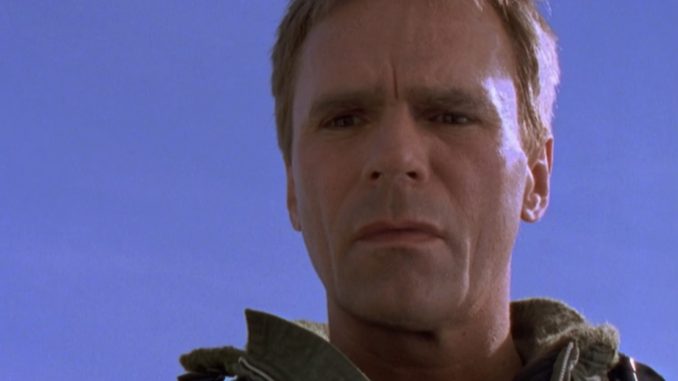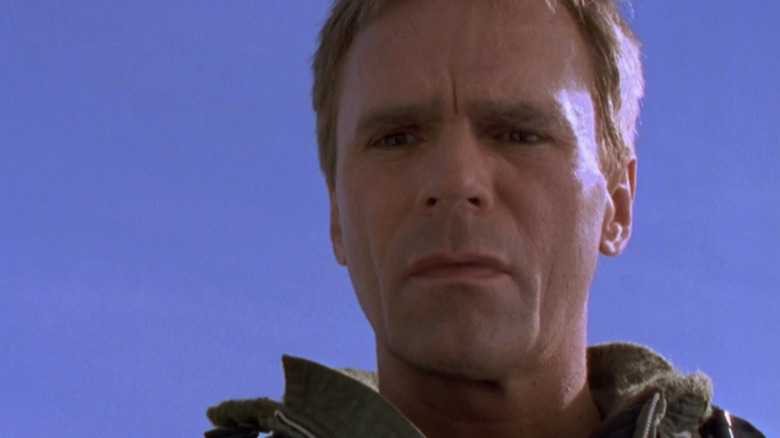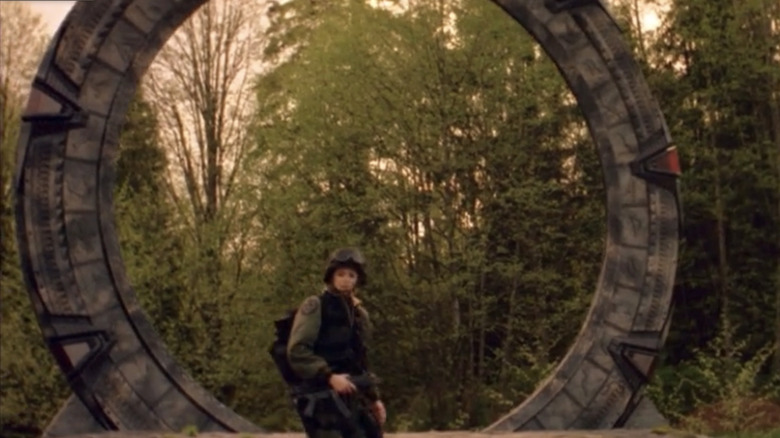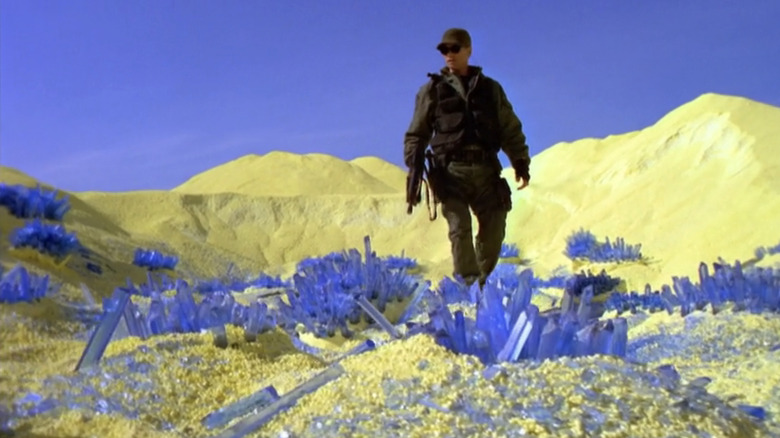
Though it was never a mega hit that commanded the kind of wide-ranging cultural influence of many other shows of its generation, “Stargate SG-1” maintained a cult following throughout its run and remains impressive simply by virtue of what it represented. That is to say, the way in which creators Brad Wright and Jonathan Glassner took Roland Emmerich’s original 1994 “Stargate” movie and spun a full 10 seasons of intergalactic exploration action was a feat in and of itself.
Emmerich’s film was enough of a box office success to prompt talk of an entire “Stargate” trilogy, but the story of the SG-1 crew would ultimately unfold on the small screen, with Wright and Glassner shepherding the project using a whole new cast of actors that were playing the same characters from the movie. Ultimately, the Syfy channel cancelled SG-1″ in 2007, but by that point the show had run for a full decade — an impressive accomplishment not only because of the way in which Wright and Glassner had successfully turned a big budget sci-fi epic into a cult hit TV show, but also because they’d managed to tell a galaxy-spanning story that required its characters to visit a diverse array worlds for a full 10 years while shooting from the same Canadian location.
The titular SG-1 team’s whole objective was to use the Stargate portal to investigate alien worlds, which is solid enough as a sci-fi premise. In practical terms, however, this made producing the series somewhat of a challenge, given its base of production.
Finding new locations for Stargate SG-1 was tricky
“Stargate SG-1” begins roughly a year after Roland Emmerich’s “Stargate” wraps up. In the show, the U.S. government has tasked a U.S. Air Force squad, named SG-1, to explore alien worlds using the eponymous portal and guard against attacks by otherworldly forces. As the show goes on, the squad visits more and more intergalactic worlds and gets to know their inhabitants, with the show’s writers using our own history as a basis for many of the environments and races encountered in the series. For instance, in the season 1 installment “Emancipation” (which, according to IMDb, happens to be the worst episode of “Stargate SG-1”), the SG-1 gang visit the planet Simarka, home to a nomadic race descended from Mongols called the Shavadai.
But as the show went on, finding new ways of depicting these diverse planets and people became increasingly difficult. In essence, the series’ producers were tasked with constantly making their Vancouver, British Columbia shooting location look like somewhere completely different. VFX Supervisor John Gajdecki once spoke to Companion (via GateWorld) about the initial problems he faced when the show began production in 1997. He recalled being given access to certain props from Emmerich’s film, which certainly helped. However, the real issue came with trying to find suitable locations for the various storylines. As he noted:
“Episode 1, episode 2, we’re always outside. It’s always in the rain because that was the weather at the time. So we really started struggling to create locations that were not just in the forest.”
While beautiful in its own way, Vancouver didn’t necessarily offer much diversity beyond heavily forested areas — something that obviously posed a major challenge for a team tasked with making a sci-fi show that fundamentally revolved around exploring new and diverse planets.
Stargate SG-1’s location problems got worse over time
In his Companion interview, John Gajdecki provided specific examples of the difficulties he and his team faced shooting in Vancouver, pointing to season 1, episode 7, “Cold Lazarus,” which was filmed in yellow sulfur pits. As the VFX supervisor recalled:
“There was one episode where they were on this planet and everything was yellow. It was sulfur — it was this bizarre yellow planet. And we were filming in these huge sulfur pits that they have down by the docks. It was such a sunny day that everybody was sweating, and the sulfur … you’d walk through it and it would kick up and get on your face, and your beads of sweat would just drop it into your eyes. And they had lots of people there to take care of us!”
Though the show’s crew ultimately found ways to depict the various worlds of “Stargate SG-1,” as the series expanded these sorts of problems never truly went away. By the end of its run, “SG-1” had spawned other spin-offs, making for a modest media empire that makes watching the “Stargate” franchise in order somewhat of a challenge today. This also made the location issues that much more excruciating, with Brad Wright commenting on the whole thing during a 2022 Reddit AMA:
“Yes, it grew increasingly difficult and frustrating to go out into the woods of British Columbia and pretend it was another planet. Especially since Vancouver kept growing into the open spaces we were using.”
Still, the sci-fi settings of “Stargate” arguably declined as the series went on and further series were created, with Wright and co. having to do the best they could with their budget and Canadian setting. The fact that they managed it for 10 seasons on “SG-1” — not to mention the spin-offs — is, however, still an undeniable feat.




Leave a Reply